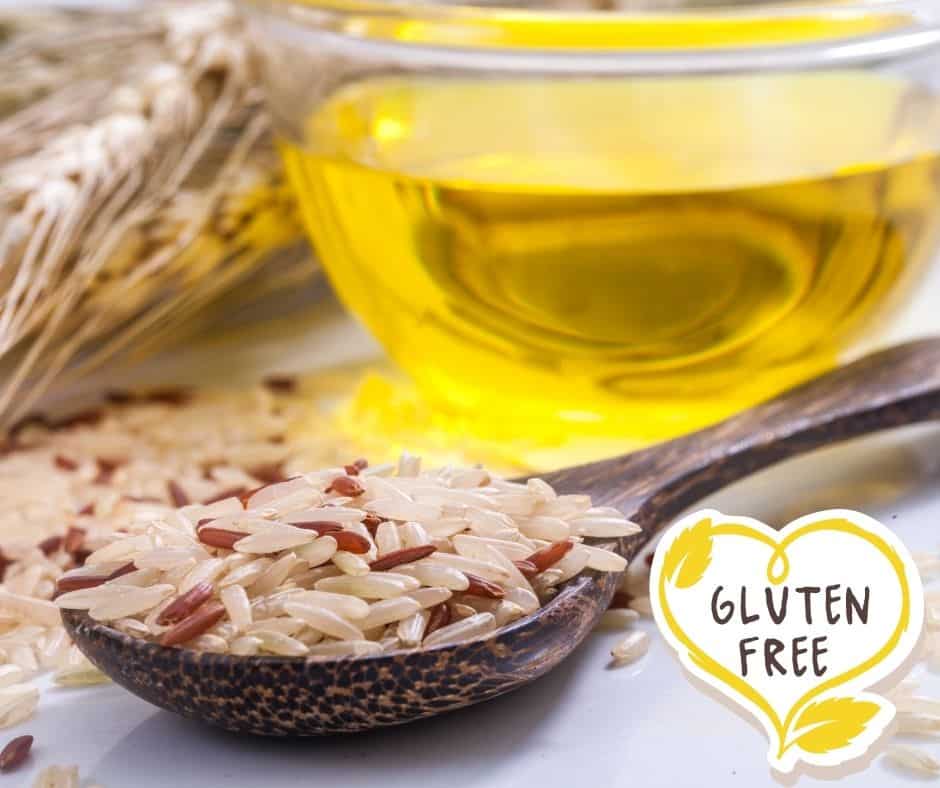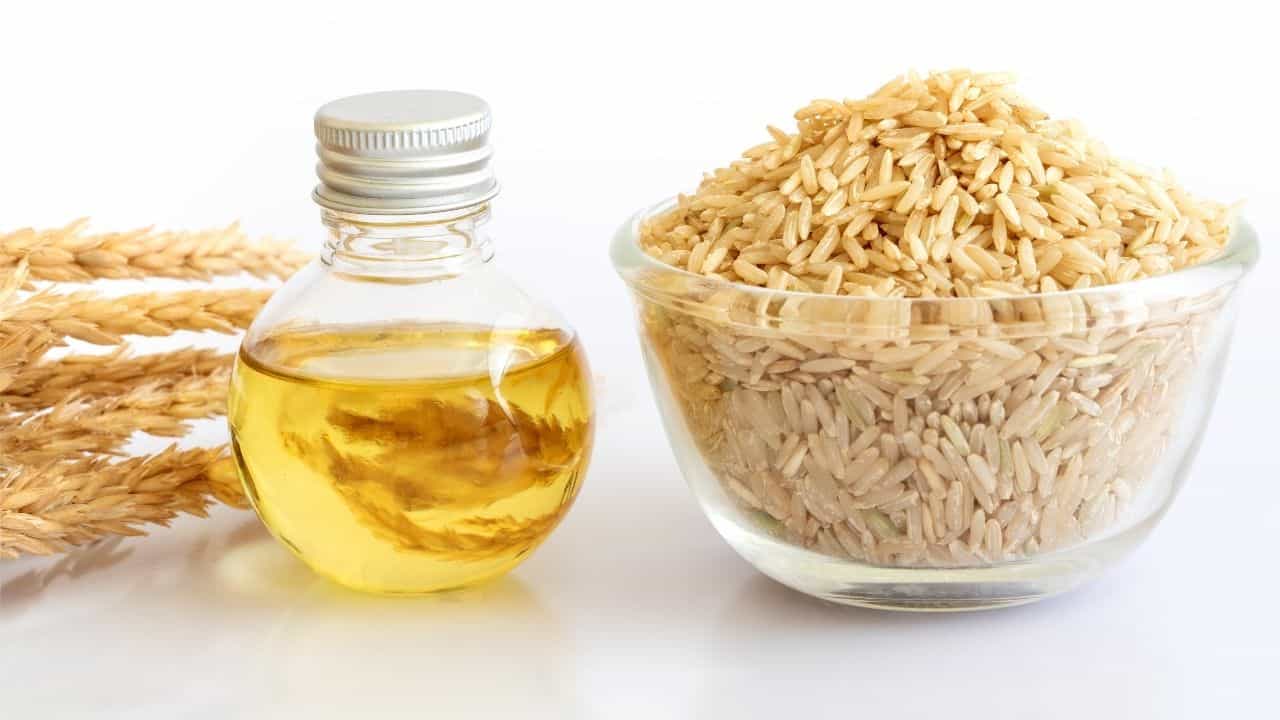For years gluten-free products used to be limited to just health-food stores. But now, you can buy them in most supermarkets, and even many restaurants offer gluten-free options.
With the boom of gluten-free products and better-labeled packages, finding foods that are free of gluten is easier than ever. However, there are still many products that you may not be entirely sure about or find alternatives for.
As it is easy to choose naturally gluten–free foods, such as fish, meat, fruit, and vegetables, then products made of grains and cereals are often the ones that may cause some confusion.
Is Rice Bran Oil Gluten-Free?

In its natural form, all varieties of rice are gluten-free; therefore, rice bran oil which is extracted from the husk, and the germ of the rice is also gluten-free. After the extraction, the raw oil is often refined to remove any particles, and resins, and improve its quality.
Rice bran oil is made directly from rice, making it safe to use in cooking for those with gluten intolerance or celiac disease. With the pleasant mild taste and an excellent source of poly- and mono-unsaturated fats, it’s no wonder this oil is becoming more and more popular in gluten-free cooking.
Rice bran is the main byproduct of rice production. Rice is one of the most grown crops in the world, so luckily, there is a lot of rice bran available. This helps keep rice bran oil affordable.
Nutrients in Rice Bran Oil

The nutritionvalue.org provides the following nutritional information. (Per one tablespoon of rice bran oil). [1]
- Fat (total) 14g
- Saturated fat 2.7g
- Calories 120
- Carbohydrates 0g
- Sodium 0mg
- Sugars 0g
- Fiber 0g
- Protein 0g
Like all cooking oils, the rice bran variety packs a large amount of calories and fat in every tablespoon. However, unlike some other oils, it doesn’t contain any dangerous trans-fat. Still, it is a good source of good fats, poly-, and mono-unsaturated fats.
In terms of nutrients, it has a large amount of Vitamin E, a great antioxidant, and also a good source of Vitamin K. With plenty of phytosterols, some say that rice bran oil may help lower blood pressure and unhealthy cholesterol as well.
Is Rice Bran Oil Good For Frying?

A crunchy, delicious piece of tempura? Yes, please! This deep-fried Japanese favorite needs to be made with an oil that works in high temperatures and tastes great. Luckily, gluten-free tempura exists now, too, if you know where to look or you can make your own.
The smoke point of rice bran oil is 450°F (232 °C), which is one of the highest for cooking oils. That makes rice bran oil a good choice for saying.
The smoke point is the temperature at which the oil can be heated without smoking and damaging its properties. Olive oil may be delicious, but it has a much lower smoke point.
This high smoke point makes it a favorite for Asian cooking, which often involves woks, deep-frying, stir-fries, and other high-temperature cooking styles.
Since it is less viscous than many oils, it doesn’t leave an unpleasant oily taste in your mouth after eating something cooked with it. This is why that shrimp tempura you had at the sushi place tasted so good!
Rice bran oil’s nutty taste has been compared to peanut oil. However, it is mild enough that it won’t overpower any dish. This makes it a better option than canola oil or olive oil, which both have a stronger and distinct taste.
Choose rice bran oil for dishes when you want only the taste of the ingredients to shine through.
It also has the longest shelf life of any other cooking oil. When your expensive bottle of olive oil has already started to go bad, your bottle of rice bran oil will still taste just as good as the day you bought it.
However, it’s not the best oil for making something like a salad dressing. It should be used in cooking and not as a condiment over something fresh.
Read This Before Deep Frying At Home!
Watch Out For Cross-Contamination
Because even tiny amounts of gluten may be dangerous and cause people with coeliac disease to have symptoms, the oil you use mustn’t be cross-contaminated. Cross-contamination is when your gluten-free oil comes into contact with gluten, whether in the factory or while cooking with it.
Although rice bran oil really is gluten-free, it is still very important to check the packaging and make sure your rice bran oil is really gluten-free. A product that is certified gluten-free will be completely safe unless you have an allergy to rice. [2]
A frequent concern for those who can’t eat gluten is the factory in which the food was made in. Rice-based products are not typically processed in the same facility that processes wheat.
This is why rice products are a favorite of those on a gluten-free diet. However, you never know, so check the packaging to see if it could have trace amounts of gluten in it.
Also, when frying, a separate fryer must be used for gluten-free items to stop cross-contamination. As it is not safe to use the same water to boil gluten-free foods with gluten-containing foods, you should also not use the same oil to fry these foods.
Read Also: 6 Very Good Reasons to Rinse Your Rice Before Cooking!
In Conclusion:
The next time you’re at the supermarket, think about reaching for that bottle of rice bran oil instead of your usual vegetable oil. You might find your new favorite cooking companion. Taste how it amps up your sautees and your stir-fries while feeling confident that your dish is completely gluten-free, down to the last drop.


